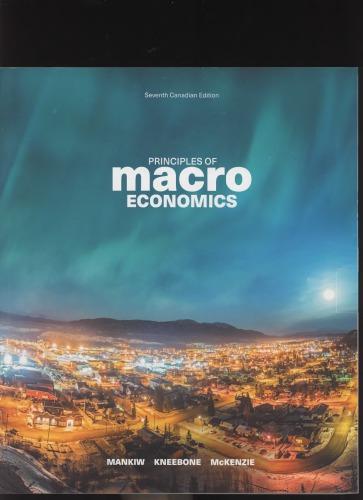2. Explain the relationship among saving, investment, 5. If the Bank of Canada started printing large quantities
Question:
2. Explain the relationship among saving, investment, 5.
If the Bank of Canada started printing large quantities and net capital outflow.
of Canadian dollars, what would happen to the num3.
If a car in Japan costs 500 000 yen, a similar car in ber of Japanese yen a dollar could buy?
Canada costs $10 000, and a dollar can buy 100 yen, 6.
Describe the economic logic behind the theory of what are the nominal and real exchange rates?
interest rate parity.
1. Comparing the Canadian economy today to that of 4.
If a nation's currency doubles in value on foreign 1950, what does one find to be true about exports and exchange markets, the currency is said to___, reflecting imports today as a percentage of GDP?
a change in the___exchange rate.
a. exports and imports are both higher
a. appreciate, nominal
b. exports and imports are both lower
b. appreciate, real
c. exports are higher, and imports are lower
c. depreciate, nominal
d. exports are lower, and imports are higher
d. depreciate, real 2. In an open economy, national saving equals domestic 5.
If a cup of coffee costs 2 euros in Paris and $6 in investment Toronto and purchasing-power parity holds, what is
a. plus the net outflow of capital abroad.
the exchange rate?
b. minus the net exports of goods and services.
a. 1/4 euro per dollar
c. plus the government's budget deficit.
b. 1/3 euro per dollar
d. minus foreign portfolio investment.
c. 3 euros per dollar
Step by Step Answer:

Principles Of Macroeconomics
ISBN: 9780176591977
7th Canadian Edition
Authors: N. Mankiw, Ronald Kneebone, Kenneth McKenzie






